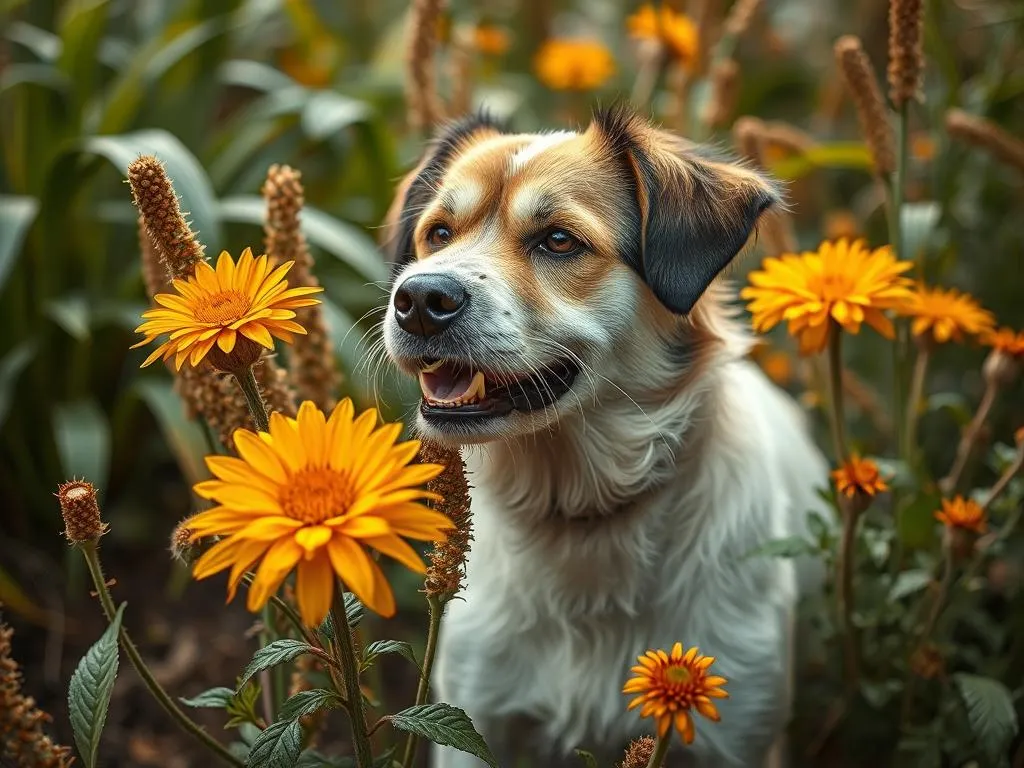
Introduction
For many dog owners, the backyard is a cherished space, a personal oasis where pets can run free and explore. However, this idyllic picture can sometimes come with a downside: the relationship between dogs and gardens can be complicated, especially when it comes to the effects of dog urine on plants. Understanding whether dog pee kills plants is crucial for pet owners who want to maintain a healthy garden while allowing their furry friends to enjoy the outdoors.
In this article, we’ll delve into the composition of dog urine, explore its effects on various plants, and discuss factors that influence its impact. We’ll also provide practical strategies for mitigating any damage that might occur. By the end, you should have a clearer understanding of how to maintain a beautiful garden while keeping your dog happy.
Understanding Dog Urine Composition
What is Dog Urine Made Of?
Dog urine is primarily composed of water, accounting for about 95% of its content. The remaining 5% consists of various compounds, including:
- Urea: A byproduct of protein metabolism, urea is an important nitrogen source.
- Ammonia: This compound can contribute to the strong smell of urine and can be toxic in high concentrations.
- Creatinine: A waste product that is often excreted in urine.
- Trace minerals and salts: These can vary depending on the dog’s diet and health.
How These Components Affect Plants
The components of dog urine can have mixed effects on plants. On one hand, nitrogen from urea can act as a fertilizer, promoting lush green growth. On the other hand, concentrated dog urine can lead to toxicity and damage, particularly in sensitive plants. Understanding these dynamics is essential for anyone looking to maintain a vibrant garden while accommodating their dog’s needs.
Effects of Dog Urine on Plants
Positive Effects
Interestingly, there can be nutritional benefits to dog urine for certain plants. The nitrogen present in urine can promote growth, particularly in plants that thrive on high nitrogen levels. For instance, grass and some flowering plants may benefit from the occasional dose of urine.
Moreover, when diluted, dog urine can act as a natural fertilizer, enhancing soil fertility without the need for synthetic alternatives. This can be particularly useful in maintaining the health of your garden.
Negative Effects
However, the negative consequences of dog pee killing plants cannot be overlooked. Concentrated urine can lead to:
- Burned grass and foliage: The high nitrogen concentration can create brown patches, particularly in grass, where urine is frequently deposited.
- Over-fertilization: While nitrogen is essential for growth, too much can lead to an imbalance, causing plants to become leggy or even die.
- Long-term soil health implications: Frequent exposure to high levels of nitrogen can alter soil pH and microbial activity, potentially making it less hospitable for plant growth.
In summary, while there are benefits to dog urine, the potential for damage is significant and warrants careful management.
Factors Influencing the Impact of Dog Urine
Concentration of Urine
One of the most critical factors influencing the impact of dog urine on plants is its concentration. Diluted urine, often from watering or rainfall, is less likely to cause significant harm. Conversely, concentrated urine can result in severe damage, particularly to delicate plants.
Frequency of Exposure
The frequency with which a dog urinates in a specific area also matters. Occasional urination may not cause noticeable damage, while regular exposure can lead to cumulative effects that harm the plants over time.
Type of Plants
Different plants react differently to dog urine. Sensitive plants, such as certain ornamental flowers and delicate herbs, may show signs of distress quickly. In contrast, hardy plants like dandelions and some grasses may tolerate or even thrive on the extra nitrogen. Understanding which plants are more resilient can guide gardeners in making better choices.
Environmental Conditions
Finally, environmental conditions—such as soil type, moisture levels, and climate—play a crucial role. Well-draining, sandy soils may mitigate the effects of concentrated urine better than heavy clay soils, which retain moisture and can exacerbate the impact of nitrogen. Additionally, moist conditions can dilute urine more effectively, reducing its harmful effects.
Mitigating Damage to Plants
Training Your Dog
One of the best ways to manage the impact of dog urine on your garden is to train your dog to use designated areas for urination. Establishing a specific spot in the yard can help contain the damage and protect your prized plants. Using positive reinforcement techniques can encourage your dog to develop this habit.
Plant Selection
Choosing dog-resistant plants is another effective strategy. Opt for hardy varieties that can withstand the occasional nitrogen boost, such as:
- Zinnias
- Marigolds
- Daylilies
- Sedum
These plants tend to be more tolerant of dog urine and can thrive even in less-than-ideal conditions.
Soil Management
Incorporating soil amendments can help counteract the effects of dog urine. Adding organic matter, such as compost, can improve soil structure and enhance its ability to handle nitrogen. Additionally, employing products like gypsum can help reduce soil salinity and improve plant health.
Regular Maintenance
Regular watering can help dilute the effects of urine on plants. By watering frequently, you can wash away excess nitrogen and help prevent concentrated areas of damage. Moreover, maintaining a balanced watering schedule will support overall plant health.
Additional Considerations
Alternative Solutions
To reduce the impact of dog urine on your garden, consider using dog-friendly fertilizers and soil amendments. Many products are designed to provide nutrients without the negative effects associated with high nitrogen levels.
Health Implications for Dogs
While discussing whether dog pee kills plants, it’s essential to note that high nitrogen levels in urine can also impact your dog’s health. Excessive nitrogen can lead to urinary tract issues or even kidney problems. Ensuring your dog has a balanced diet and plenty of water can minimize these risks.
Eco-Friendly Practices
Incorporating sustainable gardening practices is vital for any pet owner. This includes using organic fertilizers, planting native species, and promoting biodiversity in your garden. Such practices not only benefit your plants but also create a healthier environment for your dog.
Conclusion
In summary, the question of whether dog pee kills plants is nuanced. While there are potential benefits to the nitrogen found in dog urine, the risks of damage are significant, particularly for sensitive plants. By understanding the composition of dog urine and the factors influencing its impact, pet owners can take proactive steps to mitigate damage.
Implementing strategies such as training your dog, selecting resilient plants, managing soil health, and maintaining regular watering can help maintain a flourishing garden. Balance is key—understanding both the risks and benefits will enable you to create a pet-friendly outdoor space.
As you navigate the challenges of gardening with a dog, remember that sharing experiences and tips with fellow pet owners can provide valuable insights. Your garden doesn’t have to suffer just because you have a furry friend; with the right knowledge and strategies, you can enjoy the best of both worlds.









